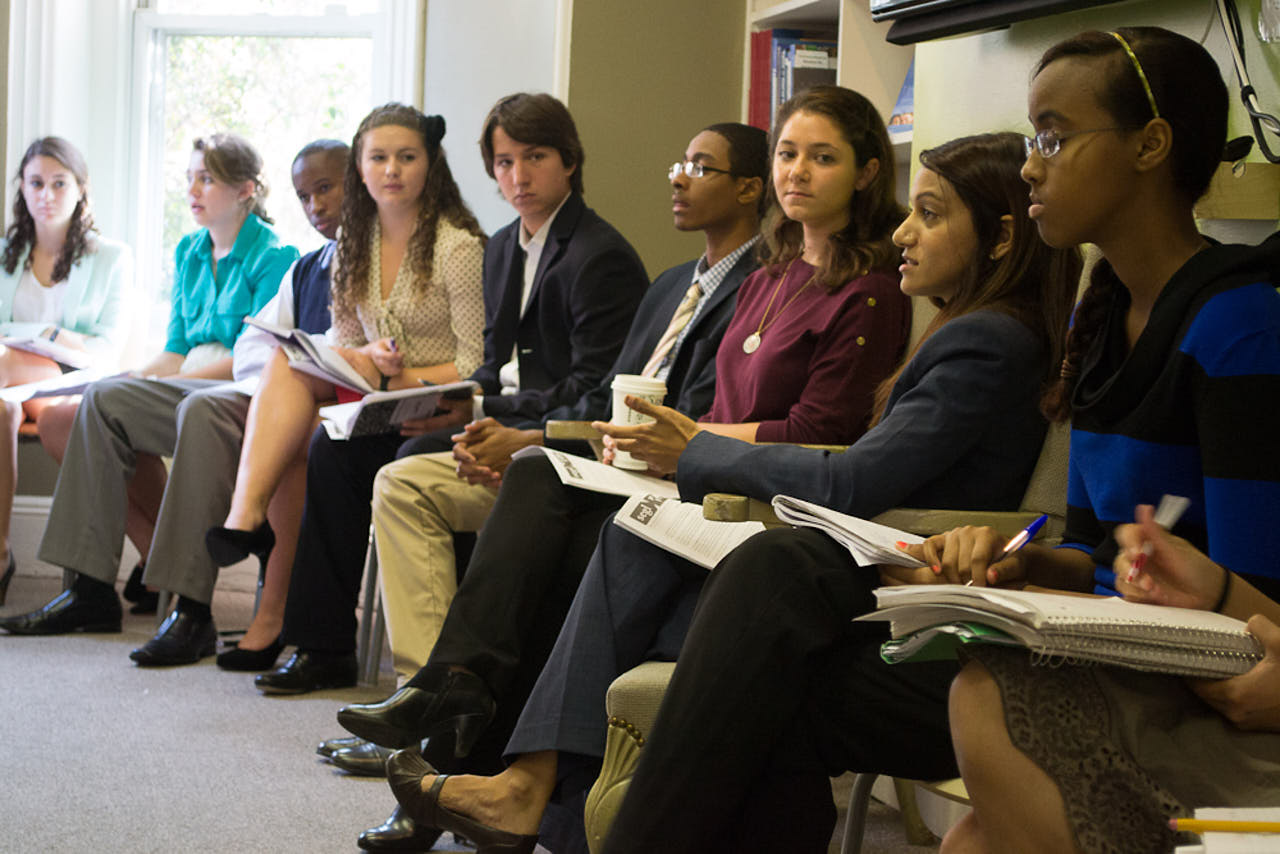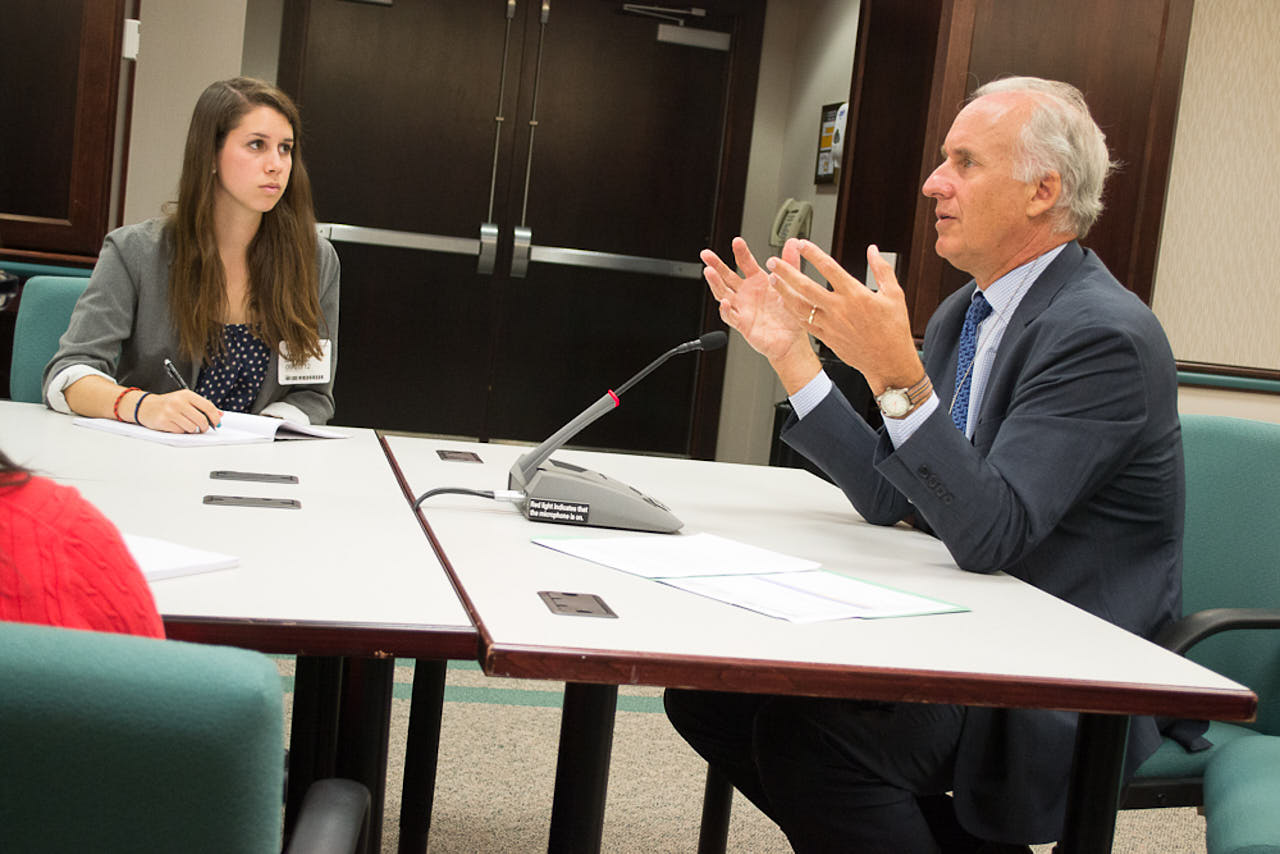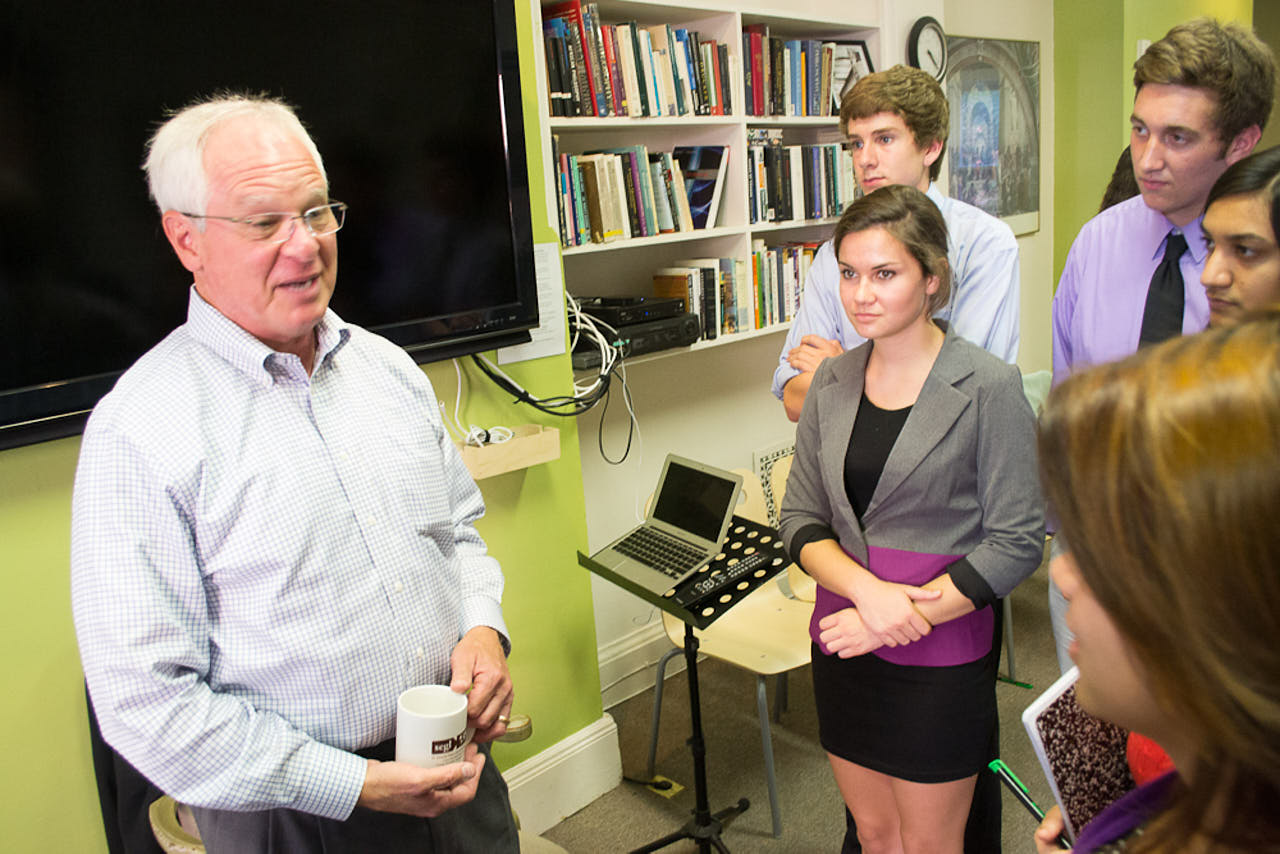SEGL students present energy efficiency plans at the White House
When is the last time you had to make a big presentation? Was it in front of your class? Your boss? Your family? This past week, SEGL students presented at the White House as part of our case study on energy efficiency.The assignment? Imagine you are a federal agency, charged with meeting the energy efficiency requirements of Executive Order 13514, which mandates that the federal government become more energy efficient. Your specific task is to design a budget-conscious plan for the agency headquarters–SEGL’s Academic Building–and to present that plan before Jon Powers, the Federal Environmental Executive. Powers, a former officer in the Army, is charged with ensuring that all federal agencies are environmentally sustainable.

On Monday, two White House staffers, Sydney Schneir and Sonal Kemkar, joined us to overview the role of the Council on Environmental Quality (CEQ), which oversees the Federal Environmental Executive and promotes sustainability in the United States and in the federal government. Students broke down into small groups to investigate the status quo of SEGL’s Academic Building. Is the thermostat on a timer? What kind of lightbulbs do we use? Is the heating and cooling system effective? How effective are our windows? The building, built in the 1890s, has many opportunities to improve! Schneir, who is organizing the largest federal government conference on energy efficiency, and Kemkar, a top expert on energy efficiency in federal buildings, stayed to answer many questions as the students explored the building.

On Thursday morning, we made our first-ever trip to the Department of Energy to meet with Senior Advisor to the Secretary of Energy (and Fall 2011 parent) Richard Kauffman. Kauffman, a leading expert on third party financing, helped the students understand how agencies might fund sustainability projects despite the current economic climate. Using public-private partnerships, Kauffman helps to find win-win situations across the government. The students also got to see the Department’s Manhattan Project exhibit and use the same microphones used at Congressional hearings for the first time.

On Thursday afternoon, Dudley Lacy, SEGL Board Chair and President/COO of O’Brien Atkins, a North Carolina-based architecture firm, visited SEGL. Lacy, a LEED-certified architect, introduced the popular LEED certification system, showed some of his firm’s latest energy efficiency projects (including the most energy efficient data center in the world) and gave the students many new ideas for their presentations.

On Friday, we trekked to the White House Conference Center (just across Lafayette Park from the White House) to meet with Powers. The four student groups (each of which had a different focus–health and safety, academic excellence, sense of community, and external relations) each presented their plans and answered Powers’ questions. LED lights, new windows, painting the roof white (to avoid what Lacy called the “heat island effect”), rooftop windmills, and plants throughout the building were a few of the ideas given airtime. Powers and his staff left impressed, and our students left with a memorable experience and a bit more confidence.
The next step? Presenting these possibilities, with Powers’ comments, to the SEGL Board of Trustees. And in the meantime, setting up a student committee to suggest ways to implement the low-cost aspects of these plans soon!











